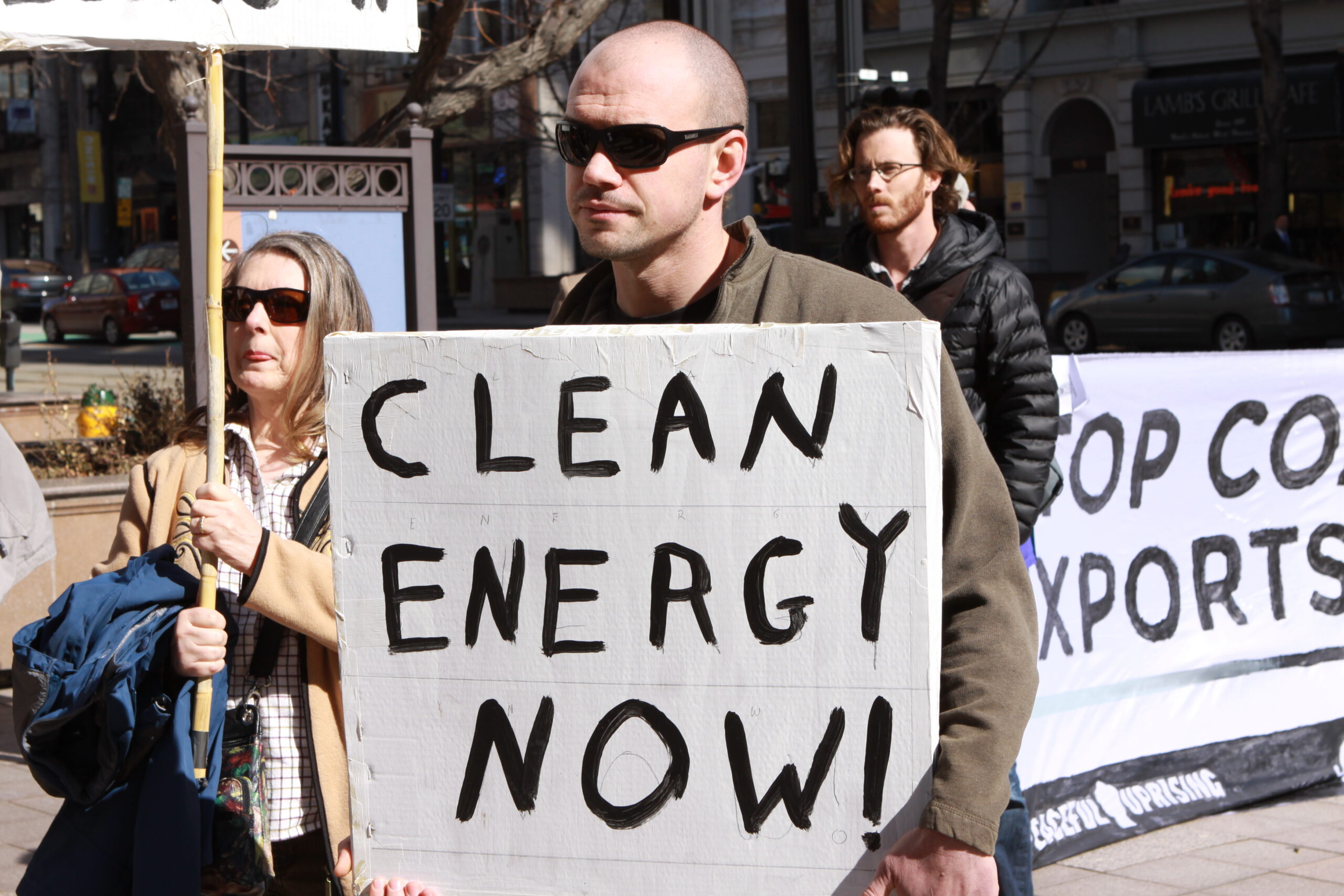Good morning from Interstate 5!
In just a few short hours, the Yes on I‑1631 coalition will be submitting petitions to qualify to the November statewide ballot a groundbreaking initiative that would put a price on pollution in Washington State and use the revenue raised to fund a just and responsible transition to a clean energy economy.
To celebrate the successful signature drive for I‑1631 and invite Washingtonians to join us in voting YES this November, a delegation of activists and leaders from coalition partner organizations are traveling together to Olympia on a battery-powered Proterra Catalyst E2 electric bus.
We left our gathering point near the Rainier Beach Link Light Rail Station about twenty minutes ago and are currently passing through Fife.
As we made our way south on I‑5, I talked to Proterra’s Rich Feldman about our high-tech means of getting to the Secretary of State’s Elections Annex.
Feldman told me the Proterra Catalyst E2 debuted several months ago and is in service with a number of different agencies across the country, notably in California. Since sales began, Proterra has signed up sixty-nine customers who have committed to buying nearly six hundred Catalyst buses with no tailpipes.
King County has a total of four buses currently in revenue service.
Over 75% of the components for these Catalyst buses are sourced from North America„ the company says, with parts and equipment coming from more than thirty-four of the fifty states — impressive in a day and age when so much manufacturing has migrated abroad.
The Catalyst sports a purpose-built composite body with battery packs positioned under the floor of the bus, giving it the ability to get the equivalent of twenty-four miles to the gallon. (For the sake of comparison, a diesel-powered bus like the kind commonly in use in our region can typically get four miles to the gallon, while a hybrid can get five. Proterra’s buses are much more efficient.)
Although the Catalyst has a higher upfront cost, its maintenance costs are drastically less than a traditional diesel bus. The Catalyst has 30% fewer parts and can offer substantial operational savings to a transit agency.
Catalyst buses are engineered to last at least twelve years and the batteries rated to last for at least six years prior to possibly needing replacement.
The Catalyst E2 offers four hundred and forty kilowatt hours onboard, giving it a range of about one hundred and forty miles in average conditions. It takes about four hours to charge the batteries after they have been mostly depleted.
Actual range, of course, varies based on weather, road conditions, and the number of passengers on board. But a bus that can go over a hundred miles without needing a recharge is a bus that is versatile enough to handle many routes.
The bus we’re traveling on is owned by Proterra, which is fronting the costs of today’s journey to Olympia as an in-kind contribution to the Yes on I‑1631 coalition. Proterra representatives say that their mission is to provide clean, reliable, advanced mass transportation at all using the latest technology.

